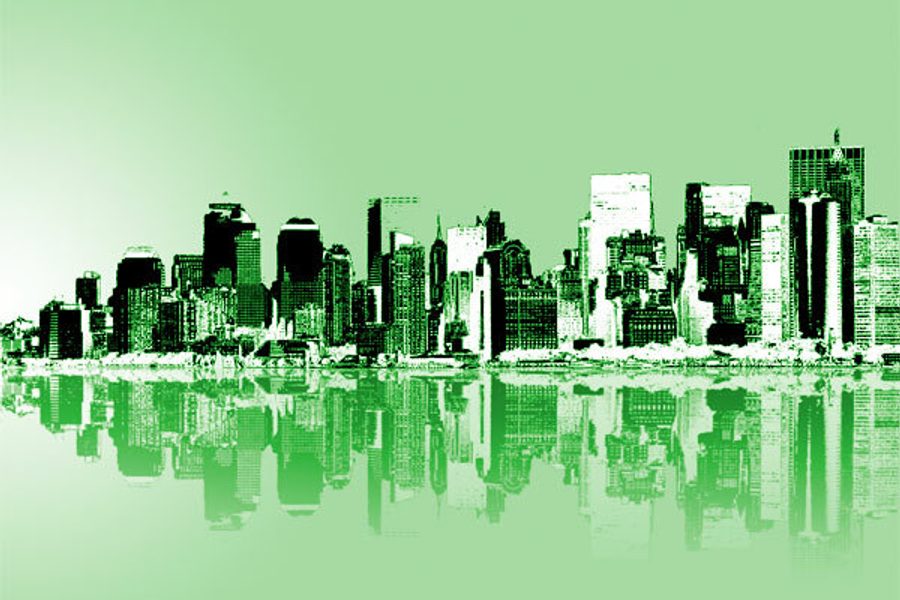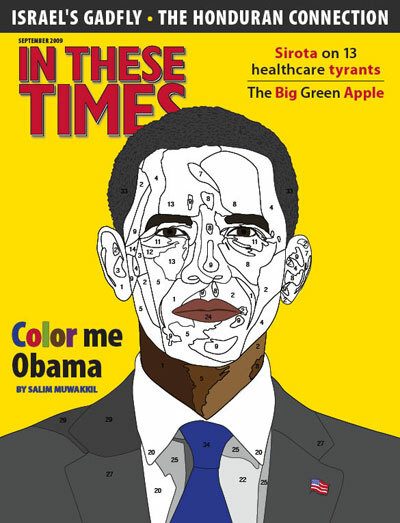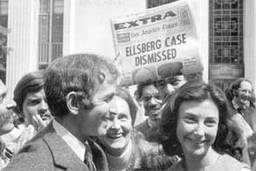
What’s the most ecologically sustainable town in America? Most people pondering this question might imagine a village in Vermont with rolling hills and roadside farm stands. Environmentalists might cite Portland, Ore., with its hydropower, vast urban parks and strict land-use regulations. David Owen’s candidate is a “utopian environmental community” in New York state where he stayed after college. People there lived in tiny dwellings designed for maximum energy efficiency and walked or took public transportation because the rules made driving a car virtually impossible. Its inhabitants called this austere eco-commune “Manhattan.”
The notion that our grayest settlement is also our greenest will strike many people as an absurdity. We’re used to thinking of New York City as entirely incompatible with nature, an artificial landscape of steel and concrete and asphalt that chokes the air with exhaust fumes, poisons the waters with sewage and buries every inch of open space under an office tower. It’s also, in conventional wisdom, a toxic spiritual environment: a sterile rat race where vice and disease flourish and human nature languishes. In Green Metropolis: What the City Can Teach the Country About True Sustainability, Owen mounts a vigorous challenge to both of these hoary tenets of environmentalism. New York’s dense urbanity, he contends, offers a compelling blueprint for addressing our ecological crises, not with pie-in-the-sky technology, but with the underappreciated virtues of physical and social connectedness.
According to Owen, it’s New York’s most obvious feature – lots of people, all crowded together – that make it a green poster-burg. New Yorkers live cheek by jowl and stacked 30 stories atop each other, with residences crammed in alongside shops and offices and factories. The city’s extreme density and compactness result in great energy efficiency, because they enable – and compel – its residents to forgo cars and detached houses, two of America’s greatest fossil fuel-guzzlers. New Yorkers can easily get to most of the places they want to go on foot and to the rest by a mass transit system that can afford to be ubiquitous and convenient, because it is always thronged with riders. Meanwhile, the city’s horrendous traffic induces a socially benign state of “driver frustration” in motorists, who face perpetual gridlock, epic journeys in search of parking spaces and hordes of insolent pedestrians weaving around blocked cars and sauntering against the light. It’s enough to make millions of New Yorkers swear off cars altogether.
Plus, the city’s massive apartment buildings are marvels of low-tech insulation: Most of the heat seeping from one apartment warms the units abutting it, rather than escaping into space as it would in a suburban house. The casual collectivism of tenement life abounds in material efficiencies that add up to a kind of mindless anti-consumerism. The 70 households in my building, for example, make do with just six basement washing machines and dryers among them. People living in New York’s cramped apartments buy less stuff than other Americans, Owen notes, simply because they have no place to put it.
The upshot of all those New Yorkers jostling onto the subway, schlepping bags home from the corner grocery and yelling at the upstairs neighbors to keep it down is nothing short of an environmental miracle. Thanks to their thoughtlessly low-impact lifestyle, the typical New Yorker’s carbon footprint is less than a third of the average American’s. If everyone lived the same way, the nation’s carbon dioxide emissions would plunge by 70 percent. Manhattan has essentially solved the problem of global warming using the most advanced technologies of the 1890s.
By contrast, the modern-day green gadgetry touted by environmentalists succeeds more at maintaining the car culture and suburban homeownership than at sustaining the environment, Owen argues. People who own hybrids tend to compensate for higher gas mileage by driving longer distances, and the rooftop wind turbines and photovoltaics affixed to green showcase houses hardly make up for their wasteful size and heat-spilling picture windows. Owen is especially derisive of green architecture guidelines that prescribe trifles like vegetative roofs and employee bike racks while encouraging companies to site their offices amid open space, a practice that pushes development into regions far from the urban core that are only accessible by automobile. Any lumpen skyscraper in Manhattan is greener than the most avant-garde suburban office park, he reasons, because its workers arrive by mass transit.
At the root of such wrong-headedness, Owen locates an anti-urban bias intrinsic to environmentalism, a knee-jerk Jeffersonian conviction that embracing nature means spurning the city. He finds it in Amory Lovins’s Rocky Mountain Institute, a cutting edge eco-edifice that he regards as an environmental disaster area because it is situated in a rural area that is unreachable except by car. He finds it in food guru Michael Pollan and other locavore ideologues who don’t realize that driving 50 miles to get produce at a farmstand actually wastes more energy than having it shipped thousands of miles to a city supermarket by rail. He finds it, above all, in our Thoreauvian idea that a responsible green lifestyle means backyard organic gardens and compost piles, curbside recycling and fierce campaigns to preserve green space from development. What the gardens and yards and verdant expanses amount to, Owen observes, is a diffuse settlement pattern that requires auto transportation for survival, with all the requisite infrastructure of highways and parking lots and strip malls. Our flight from the city into nature isn’t an antidote to sprawl – it is sprawl.
So there’s a contradiction that bedevils our anti-urban eco-consciousness: Much as we profess to love nature, nature does not love us; the tighter we clasp her, the faster she dies. It’s not even clear that we can love nature wholeheartedly. For all our fetishizing of open spaces, studies show that people tend to shun them – not just because of our primal dread of lonely places where predators lurk, Owen conjectures, but because vacant greenery is irremediably boring. People are fascinated by other people, which is why the endless carnival of New York’s street life is a more magnetic draw than Central Park.
New York’s density forces its millions to confront and abate the toxicity of modern life through a vast, kvetching project of communal self-control and problem-solving. “A car makes its driver a self-sufficient nation of one,” Owen writes. That’s an ethos that the city combats far more forthrightly than the individualized green consumerism of the exurban environmentalist.
But New York isn’t all limitation and constraint; as it struggles to tame negative externalities, it offers a bounty of positive externalities in the dazzling variety and intensity of activities its teeming multitudes support. On a mile-long stroll around my neighborhood, I can stop at the bank, get my hair cut, buy groceries and a computer, and apply for a passport; if I have time to kill during that circuit I can eat at one of dozens of restaurants, see a movie, take karate lessons, visit a museum of medieval art, brood over a Revolutionary War battlefield and worship any number of gods. And, yes, I can commune with nature, in a beautiful little park overlooking the Hudson that’s frequented by hawks, wild turkeys, skunks and wandering herds of humans who make the place feel both livelier and safer. My one brush with crime in the city came one day when I was passing through the park and was set upon by a group of Dominican teenagers; they were promptly chased away by another group of Dominican teenagers who happened to be walking by. That’s the thing about Manhattan: There are always people walking by, ready – usually – to lend a hand.








